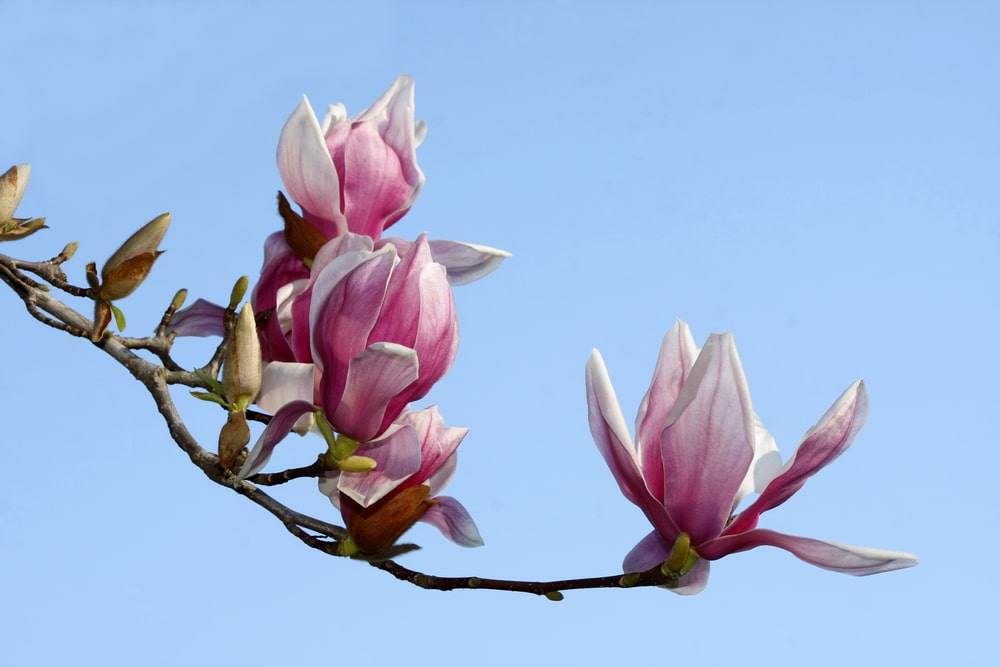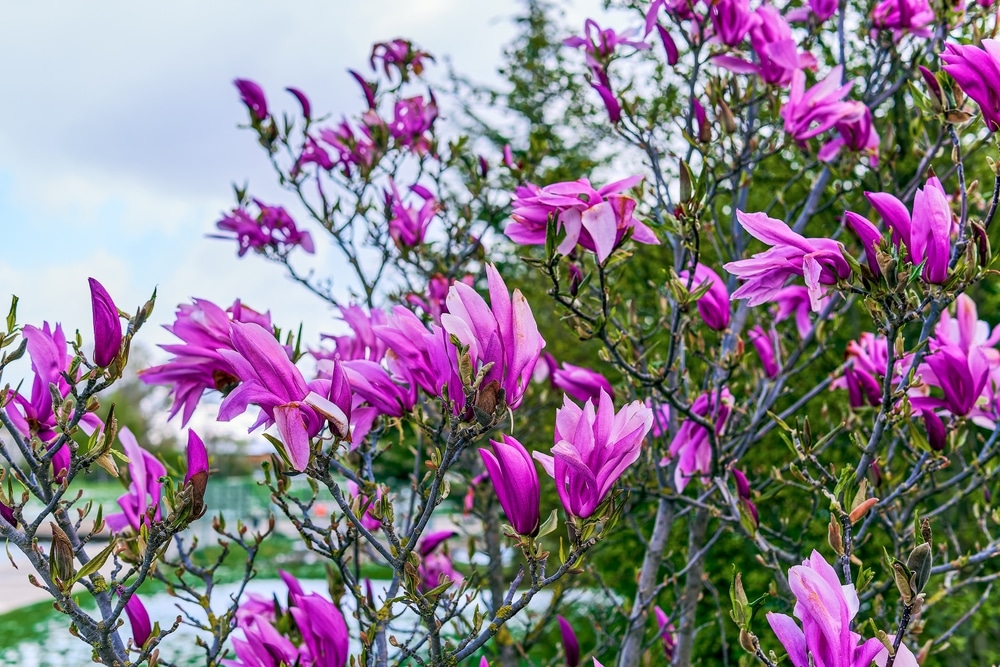The Japanese Tulip Tree is also known as the Magnolia Tulip, although it is sometimes confused with the Tulip Tree that is native to North America, these two trees are distinctly different.

| Botanical Name | Magnolia x soulangiana |
| Common Name | Tulip Magnolia Tree or Saucer Magnolias |
| Plant Type | Perennial |
| Flower Color | White, pink, purple hues |
| Size When Mature | 4 to 6 Inches across |
| Bloom Time | Late winter, in February or March |
| Sun Requirements | Full Sun |
| USDA Hardiness Zones | 4 to 9 |
| Soil PH Range | 5.0 to 6.5 |
| Soil Type | Acidic, well-draining and friable |
| Water Needs | Moderate watering needs |
| Native Area | Asia and South America |
What You Need To Know About the Japanese Tulip Tree
The Japanese Tulip Tree is a common ornamental tree that is popular in compact and medium-sized yards due to its smaller stature. This tree can range between 15 and 25 feet in height at maturity, with an equal spread.
All parts of the Japanese Tulip Tree are poisonous to humans and animals. Therefore, some homeowners may choose to plant it where there is no threat of anyone or anything consuming it accidentally. They offer fragrant flowers that bloom in spring for approximately a month. However, this tree will not show blooms until it matures, making you wait up to 15 years for flowers.
How To Care for a Japanese Tulip Tree
Here’s everything you need to know about growing and caring for a thriving Japanese Tulip Tree.
Light
This decorative tree grows best when it sits in full sun with ample air circulation. In addition, they should sit in a location where it receives at least six complete hours of sunlight. Therefore, if it is in a spot where shade is typical throughout the day, it can still thrive with limited direct sunlight. However, it may have a slower growth rate than if it is in natural light for a good portion of the day.
Water and Soil Needs
The soil where you plant your Japanese Tulip Tree should be loose and have a crumbly texture. It should have ample drainage, with an ideal pH level of 5.0 to 6.5, landing on the more acidic side.
Japanese Tulip Trees grow best when they receive at least one inch of rainwater per week. However, if you live in an area with less precipitation, you must supplement it with slow watering for a couple of hours. The soil should be saturated between two and three feet below the surface.
Temperature Requirements
The Japanese Tulip Tree is relatively cold-hardy and survives well in USDA climate zones 4 to 9. This wide range enables many residents across the United States to enjoy this decorative tree on their property without issues.
However, if you live in a climate zone 4 and have frequent drops in temperature below freezing, it’s best to protect your Japanese Tulip Tree using a wrapping method. This way, you minimize the risk of any damage during the harsh weather.
Fertilizer
The best fertilizer used on a Japanese Tulip Tree is a balanced multipurpose mixture of 10-10-10. This amount provides equal amounts of 10% nitrogen, phosphorous, and potassium. You should add fertilizer to your tree during the spring for optimal growth.
Often, the easiest way to administer a balanced fertilizer to your tree is using a liquid mixture or adding granules to the soil and watering thoroughly. However, some fertilizer spikes can go directly into the ground at the tree’s dripline and break down slowly with each rainfall.
Common Diseases
The Japanese Tulip Tree is not prone to many pests or diseases. However, it can be susceptible to root rot if the soil does not drain adequately and sits in standing water for too long. In addition, scales and canker diseases can happen and quickly spread if you have several trees nearby.
Japanese Tulip Tree Propagation
The best way to propagate the Japanese Tulip Tree is to take 8 to 12-inch cuttings from the tree’s interior during January or February. Be careful not to select branches that have flower bulbs on them, or you risk the possibility of growth.
Place the cuttings in water until ready to root them in the soil. Slice the stem vertically with a 2-inch cut and dip them in a high-quality hormone solution. Plant them in soil that has ample drainage and mist often.
